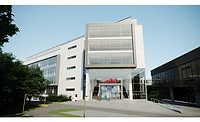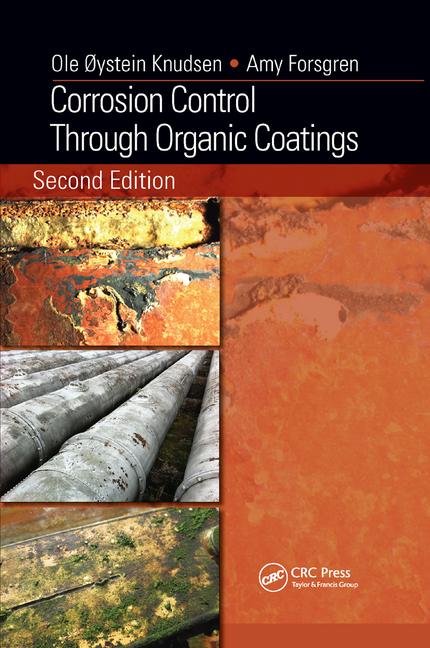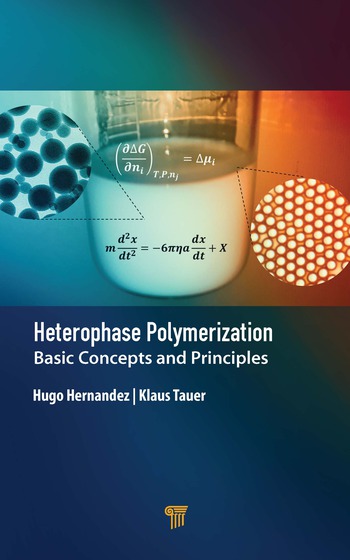High-Build MCU Coating Innovation
An MCU resin has been developed that presents new opportunities for protecting structural steel in corrosive environments.

 A moisture-cure urethane (MCU) coating is a one-component paint that consists of a polyisocyanate functional resin along with solvents, pigments, catalyst, and additives. The coating cures as the isocyanate resin reacts with ambient moisture after being applied to the substrate. Figure 1 describes the curing mechanism in more detail.
A moisture-cure urethane (MCU) coating is a one-component paint that consists of a polyisocyanate functional resin along with solvents, pigments, catalyst, and additives. The coating cures as the isocyanate resin reacts with ambient moisture after being applied to the substrate. Figure 1 describes the curing mechanism in more detail.
When the coating is applied to the substrate, solvent begins to flash off and the coating absorbs some of the ambient moisture. The isocyanate (R-NCO) reacts with that moisture to form an amine (R-NH2) and release carbon dioxide gas. The isocyanate then reacts with the amine to form a polyurea crosslinked network.
The use of an aliphatic MCU topcoat offers several advantages. For example, these types of coatings can cure at low temperatures, as long as ambient moisture is present. Also, MCUs are very surface tolerant and, because they are a one-component paint system, mixing errors between multiple components in the field are avoided.

Four methods are typically used to make a stable MCU coating:
The vacuum method uses heat and a vacuum to azeotrope up to 80% of the water from the mill base. The residual water is then removed using PTSI. This manufacturing method produces a higher quality paint when compared with the conventional PTSI method. PTSI is an expensive raw material; by removing a large portion of the water through the azeotrope step, a reduced amount of PTSI is required. The reduction in PTSI leads to considerable cost savings and creates less of the PTSA byproduct. PTSA is acidic and can cause issues with weathering and extended curing time.
The IPDI method uses large amounts of isophorone diisocyanate to overwhelm and react with the free water in the mill base. This is typically done under heat to expedite the process. The % NCO of the mill base is measured over time. Once the % NCO content stabilizes, the mill base is considered to be free of water and the remaining free IPDI monomer is chain-terminated using an OH-functional material.
The final method to make a stable MCU coating is to use a low-functionality polymeric isocyanate, typically one functional to react with the free water in the mill base. The greatest benefit to using this method is that it is a monomer-free process with fewer handling concerns.

The North American MCU market has reached its full potential with the current technology due to technical limitations and application difficulties. MCU coatings that are applied beyond the manufacturer’s recommended film thickness have a strong tendency to run and blister, which results in the need for field repair and a generally poor perception of MCU topcoats.
In order to advance the MCU technology and coating market, drastic improvements were required in coating performance. A more robust technology has been developed and is expected to renew interest in moisture-cure coatings across the various sectors of the light- and heavy-duty protective coating markets, and possibly open new markets within the construction sectors.

This resin is an HDI/IPDI prepolymer (referred to as HB resin) that was specifically engineered for high-build MCU topcoats. The resin’s engineered reactivity toward moisture makes it successful in formulating high-build MCU coatings. This controlled reactivity is one of the keys to making high-film build MCU coatings. Table 1 includes data from three different MCU resins, along with a current commercial MCU. All three resins were formulated into the same base MCU formula, with the only substitutions being the different resins.
The film build to blister (FBTB), maximum DFT prior to blisters, is measured on both a horizontally and vertically cured panel. The HB resin is able to produce coatings that are much thicker than the previous technology resins, as well as the commercial control MCU. The gloss and can stability of the HB resin are both acceptable when compared with the commercial control MCU.
The only drawback to using the new HB resin is the extended dry time. Extending this dry time is one of the keys to promoting high film build. It can be accelerated through the use of more catalyst or blending in some of the faster-drying MCU resins, at the cost of some film build.

Older weathering steel beams were blasted to SSPC-SP6 (Commercial blast),6 which resulted in a blast profile of 2.7-3.6 mils.7 A commercial organic zinc-rich MCU primer was first used to prime the blasted beams. The following day, the two MCU topcoats were applied.
The conditions at the time of the MCU application were 97°F and 50% humidity, with a 101°F metal temperature and 95°F paint temperature, which are very severe conditions for an MCU topcoat application. The face of each beam was sprayed at a gradient film thickness so the point at which the coatings were going to blister could be measured. Data from this trial is shown in Table 2.
The high-build MCU topcoat was applied up to 5 mils DFT prior to blistering being noticed, while the commercial control MCU could only be applied up to 1 mil DFT prior to blistering. This represents a very significant improvement over the current MCU technology.
The new high-build coatings can be applied at significantly thicker film builds, even in more severe environmental conditions where MCU topcoats are not currently being used. The severe weather conditions (97°F and 50% humidity) were a true test of the robustness of these two MCU technologies, as MCUs are typically applied in damp and cool environments.

Galvanized steel beams were brush-off blasted (SSPC-SP 7)9 to give a profile of ~ 1 mil. A commercial organic zinc-rich MCU primer was applied to the blasted beams at 4 mils above the blast profile. The following day, both of the MCU topcoats were applied over the primed beams.
The conditions at the time of the MCU application were 55°F and 72% humidity, with a 54°F metal temperature and 59°F paint temperature. These are typical application conditions for an aliphatic MCU topcoat.
The face of each beam was sprayed at a gradient film thickness, so the point at which the coatings were going to blister could be measured. Data from this trial is shown in Table 3.
The high-build MCU topcoat was applied up to 7 mils DFT prior to blistering, while the commercial MCU could only be applied up to 2 mils DFT. The significantly improved film build will make these coatings much easier to apply around tight angles and complex structures. Less blistering will lead to less claims and field repairs, and will greatly improve the market’s perception of aliphatic MCU topcoats.
The new high-build aliphatic MCU technology has been successfully field tested in two separate climates against a commercial control MCU topcoat. The high-build MCU topcoat could be applied at significantly higher film builds than the control prior to blistering and sagging. The severe weather conditions at the time of the hot and humid application in 2008 were a true test of the robustness of the new high-build MCU technology. The improved performance of the high-build MCU in the hot and humid conditions will allow painters to use this technology in southern and coastal regions, where they never could before. In the more traditionally cool and damp MCU trial, the new high-build technology was able to be applied up to 7 mils DFT prior to blistering.
Advances in MCU resin technology will significantly advance aliphatic moisture-cure coating technology in the maintenance coating market. With its improved film build, this robust technology is expected to renew the protective coating markets’ interest in moisture-cure coatings, and even create more opportunities in additional construction markets.
For more information, contact Bayer MaterialScience LLC at 100 Bayer Rd., Pittsburgh, PA 15205; (412) 777-3983; e-mail naftainfo@bayerbms.com; or visit www.bayermaterialsciencenafta.com.
2. ASTM D 523-08, “Standard Test Method for Specular Gloss.”
3. ASTM D 4400-99 (2007), “Standard Test Method for Sag Resistance of Paints Using a Multinotch Applicator.”
4. ASTM D 562-10, “Standard Test Method for Consistency of Paints Measuring Krebs Unit (KU) Viscosity Using a Stormer-Type Viscometer.”
5. ASTM D 5895, “Standard Test Method for Measuring Times of Drying or Curing During Film Formation of Organic Coatings Using Mechanical Recorders.”
6. SSPC-SP 6/NACE No. 3, “Commercial Blast Cleaning.”
7. ASTM D 4417-03, “Standard Test Methods for Field Measurement of Surface Profile of Blast Cleaned Steel.”
8. ASTM D 1212-91(2007), “Standard Test Methods for Measurement of Wet Film Thickness of Organic Coatings.”
9. SSPC-SP 7/NACE No. 4, “Brush-Off Blast Cleaning.”

Moisture-cure coatings featuring polyurethane resins manufactured by Bayer MaterialScience were utilized in the renovation of the Cass St. Bridge, which connects La Crosse, WI, and La Crescent, MN.

A moisture-cured polyurethane system using raw materials from Bayer MaterialScience was used to coat more than 35,000 square feet of piping and valves inside the Hammond Water Filtration Plant.
When the coating is applied to the substrate, solvent begins to flash off and the coating absorbs some of the ambient moisture. The isocyanate (R-NCO) reacts with that moisture to form an amine (R-NH2) and release carbon dioxide gas. The isocyanate then reacts with the amine to form a polyurea crosslinked network.
The use of an aliphatic MCU topcoat offers several advantages. For example, these types of coatings can cure at low temperatures, as long as ambient moisture is present. Also, MCUs are very surface tolerant and, because they are a one-component paint system, mixing errors between multiple components in the field are avoided.

Figure 1. Curing Mechanism for an MCU Coating.
Manufacturing Processes
When manufacturing an MCU coating, it is imperative that the water in the solvents and additives and on the pigments is removed from the mill base prior to the isocyanate being added. If this is not done correctly, the paint will begin to cure in the can, causing viscosity build or outgassing.Four methods are typically used to make a stable MCU coating:
- Conventional PTSI
- Vacuum
- IPDI
- Low-functionality isocyanate drying
The vacuum method uses heat and a vacuum to azeotrope up to 80% of the water from the mill base. The residual water is then removed using PTSI. This manufacturing method produces a higher quality paint when compared with the conventional PTSI method. PTSI is an expensive raw material; by removing a large portion of the water through the azeotrope step, a reduced amount of PTSI is required. The reduction in PTSI leads to considerable cost savings and creates less of the PTSA byproduct. PTSA is acidic and can cause issues with weathering and extended curing time.
The IPDI method uses large amounts of isophorone diisocyanate to overwhelm and react with the free water in the mill base. This is typically done under heat to expedite the process. The % NCO of the mill base is measured over time. Once the % NCO content stabilizes, the mill base is considered to be free of water and the remaining free IPDI monomer is chain-terminated using an OH-functional material.
The final method to make a stable MCU coating is to use a low-functionality polymeric isocyanate, typically one functional to react with the free water in the mill base. The greatest benefit to using this method is that it is a monomer-free process with fewer handling concerns.

Current MCU Market Status
In the mid 1990s, Bayer MaterialScience began manufacturing aliphatic prepolymers for the North American region specifically for aliphatic MCU topcoats. Several different prepolymers have been developed, which generally resulted in topcoat formulas that could be applied at thicknesses between 3-4 mils dry film thickness (DFT) before blistering resulted, as well as sag resistance of 4 mils. The current aliphatic MCU coatings in the market are applied at 2-4 mils DFT, and are typically used in the northeast and the northwest regions of the U.S., which experience cool and damp conditions.The North American MCU market has reached its full potential with the current technology due to technical limitations and application difficulties. MCU coatings that are applied beyond the manufacturer’s recommended film thickness have a strong tendency to run and blister, which results in the need for field repair and a generally poor perception of MCU topcoats.
In order to advance the MCU technology and coating market, drastic improvements were required in coating performance. A more robust technology has been developed and is expected to renew interest in moisture-cure coatings across the various sectors of the light- and heavy-duty protective coating markets, and possibly open new markets within the construction sectors.

New High-Build MCU Resin
After years of research, a new MCU resin has been developed that presents new opportunities for protecting structural steel in such corrosive environments as bridges, water and waste tanks, treatment plants, marine environments, chemical plants, and offshore oil and gas piping refineries, among others.This resin is an HDI/IPDI prepolymer (referred to as HB resin) that was specifically engineered for high-build MCU topcoats. The resin’s engineered reactivity toward moisture makes it successful in formulating high-build MCU coatings. This controlled reactivity is one of the keys to making high-film build MCU coatings. Table 1 includes data from three different MCU resins, along with a current commercial MCU. All three resins were formulated into the same base MCU formula, with the only substitutions being the different resins.
The film build to blister (FBTB), maximum DFT prior to blisters, is measured on both a horizontally and vertically cured panel. The HB resin is able to produce coatings that are much thicker than the previous technology resins, as well as the commercial control MCU. The gloss and can stability of the HB resin are both acceptable when compared with the commercial control MCU.
The only drawback to using the new HB resin is the extended dry time. Extending this dry time is one of the keys to promoting high film build. It can be accelerated through the use of more catalyst or blending in some of the faster-drying MCU resins, at the cost of some film build.

First Field Trial
In September 2008, a field trial was conducted to test the next-generation aliphatic MCU topcoat. The high-build topcoat was based on the HB resin previously discussed. A commercial control MCU topcoat (data in Table 1) was also sent to be tested alongside the high-build MCU topcoat. The paints were applied using a third-party contractor.Older weathering steel beams were blasted to SSPC-SP6 (Commercial blast),6 which resulted in a blast profile of 2.7-3.6 mils.7 A commercial organic zinc-rich MCU primer was first used to prime the blasted beams. The following day, the two MCU topcoats were applied.
The conditions at the time of the MCU application were 97°F and 50% humidity, with a 101°F metal temperature and 95°F paint temperature, which are very severe conditions for an MCU topcoat application. The face of each beam was sprayed at a gradient film thickness so the point at which the coatings were going to blister could be measured. Data from this trial is shown in Table 2.
The high-build MCU topcoat was applied up to 5 mils DFT prior to blistering being noticed, while the commercial control MCU could only be applied up to 1 mil DFT prior to blistering. This represents a very significant improvement over the current MCU technology.
The new high-build coatings can be applied at significantly thicker film builds, even in more severe environmental conditions where MCU topcoats are not currently being used. The severe weather conditions (97°F and 50% humidity) were a true test of the robustness of these two MCU technologies, as MCUs are typically applied in damp and cool environments.

Conditions inside the Hammond Water Filtration Plant caused pipes to sweat. Two different moisture-cured urethane primers were specified because they could be applied even if the pipes were damp.
Second Field Trial
In December 2009, a second field trial was conducted to retest the new high-build MCU technology in a cooler climate. This trial tested the same high-build paint that was used in the hot and humid trial in 2008, along with the same control MCU paint system. The paints were again applied by a third-party contractor.Galvanized steel beams were brush-off blasted (SSPC-SP 7)9 to give a profile of ~ 1 mil. A commercial organic zinc-rich MCU primer was applied to the blasted beams at 4 mils above the blast profile. The following day, both of the MCU topcoats were applied over the primed beams.
The conditions at the time of the MCU application were 55°F and 72% humidity, with a 54°F metal temperature and 59°F paint temperature. These are typical application conditions for an aliphatic MCU topcoat.
The face of each beam was sprayed at a gradient film thickness, so the point at which the coatings were going to blister could be measured. Data from this trial is shown in Table 3.
The high-build MCU topcoat was applied up to 7 mils DFT prior to blistering, while the commercial MCU could only be applied up to 2 mils DFT. The significantly improved film build will make these coatings much easier to apply around tight angles and complex structures. Less blistering will lead to less claims and field repairs, and will greatly improve the market’s perception of aliphatic MCU topcoats.
Summary
High-build aliphatic MCU topcoats have been developed using a new engineered aliphatic prepolymer. Compared with current MCU technology, which produces topcoats from 2-4 mils DFT, this new high-build MCU technology is able to produce aliphatic topcoats of 6-8 mils DFT (72°F and 50% humidity).The new high-build aliphatic MCU technology has been successfully field tested in two separate climates against a commercial control MCU topcoat. The high-build MCU topcoat could be applied at significantly higher film builds than the control prior to blistering and sagging. The severe weather conditions at the time of the hot and humid application in 2008 were a true test of the robustness of the new high-build MCU technology. The improved performance of the high-build MCU in the hot and humid conditions will allow painters to use this technology in southern and coastal regions, where they never could before. In the more traditionally cool and damp MCU trial, the new high-build technology was able to be applied up to 7 mils DFT prior to blistering.
Advances in MCU resin technology will significantly advance aliphatic moisture-cure coating technology in the maintenance coating market. With its improved film build, this robust technology is expected to renew the protective coating markets’ interest in moisture-cure coatings, and even create more opportunities in additional construction markets.
For more information, contact Bayer MaterialScience LLC at 100 Bayer Rd., Pittsburgh, PA 15205; (412) 777-3983; e-mail naftainfo@bayerbms.com; or visit www.bayermaterialsciencenafta.com.
References
1. ASTM D 7091-05, “Standard Practice for Nondestructive Measurement of Dry Film Thickness of Nonmagnetic Coatings Applied to Ferrous Metals and Nonmagnetic, Nonconductive Coatings Applied to Non-Ferrous Metals.”2. ASTM D 523-08, “Standard Test Method for Specular Gloss.”
3. ASTM D 4400-99 (2007), “Standard Test Method for Sag Resistance of Paints Using a Multinotch Applicator.”
4. ASTM D 562-10, “Standard Test Method for Consistency of Paints Measuring Krebs Unit (KU) Viscosity Using a Stormer-Type Viscometer.”
5. ASTM D 5895, “Standard Test Method for Measuring Times of Drying or Curing During Film Formation of Organic Coatings Using Mechanical Recorders.”
6. SSPC-SP 6/NACE No. 3, “Commercial Blast Cleaning.”
7. ASTM D 4417-03, “Standard Test Methods for Field Measurement of Surface Profile of Blast Cleaned Steel.”
8. ASTM D 1212-91(2007), “Standard Test Methods for Measurement of Wet Film Thickness of Organic Coatings.”
9. SSPC-SP 7/NACE No. 4, “Brush-Off Blast Cleaning.”
Links
Looking for a reprint of this article?
From high-res PDFs to custom plaques, order your copy today!







